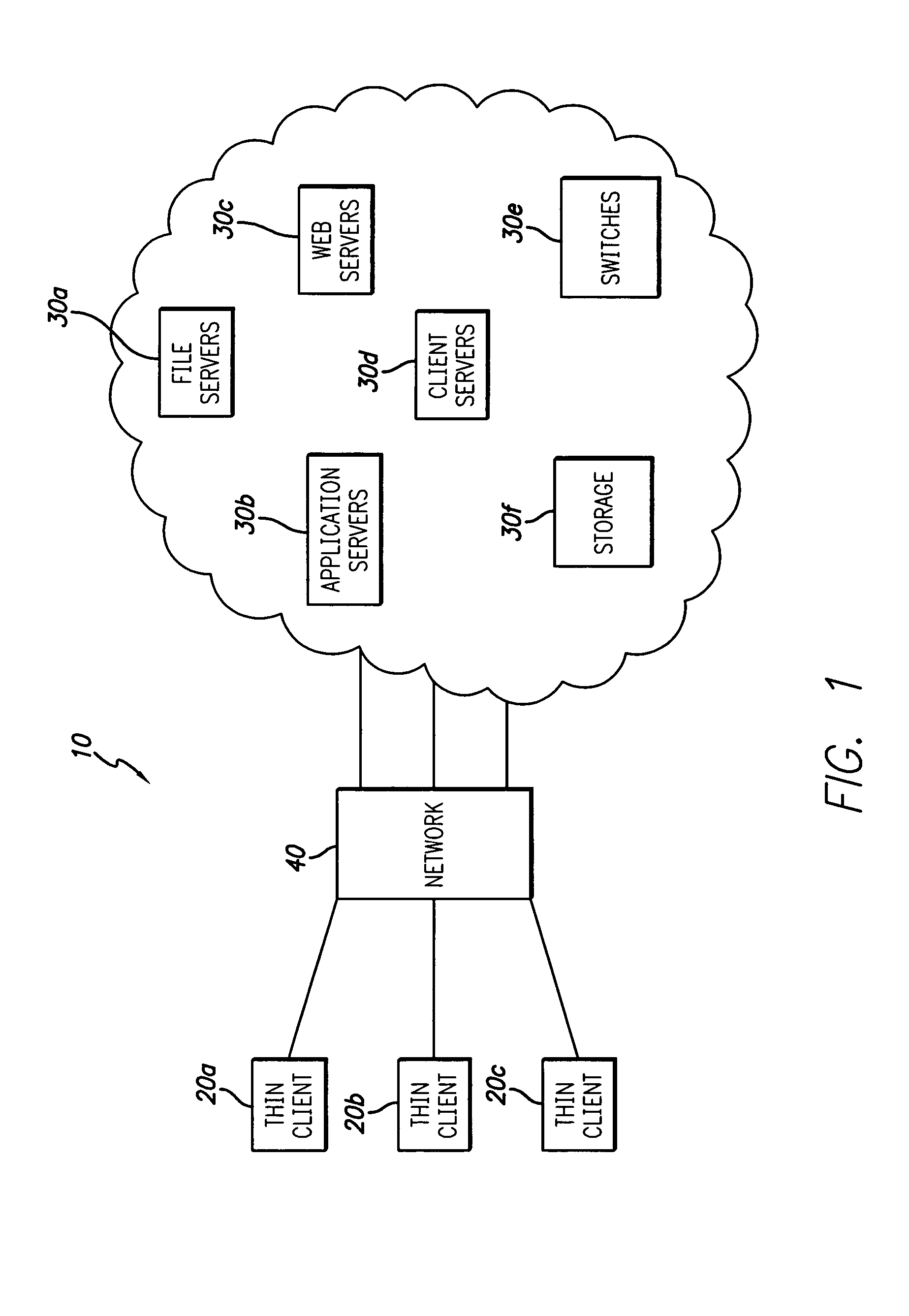Portable thin client for the enterprise workspace
a thin client and workspace technology, applied in the field of computer systems, can solve the problems of small hardware resources and high deterministic pda requirements
- Summary
- Abstract
- Description
- Claims
- Application Information
AI Technical Summary
Benefits of technology
Problems solved by technology
Method used
Image
Examples
Embodiment Construction
[0025]The present invention provides a thin client network architecture to a personal digital assistant (PDA). In one embodiment of the invention, the PDA is described as a portable thin client (or the PDA functions as a thin client of a network). More specifically, the present invention employs a computer network architecture in which the portable thin client (or PDA) is a small, stateless, portable (e.g., wireless), “plug and work” computer whose main function is to process all input and output for the user, as well as to manage communication with at least one server. All other computational tasks (or services) for the user are performed on the at least one server which is shared amongst a community of thin clients. In the following detailed description, like element numerals are used to describe like elements illustrated in one or more drawings.
[0026]Referring to FIG. 1, there is shown a thin client computer architecture as envisioned in an exemplary embodiment. In thin client ar...
PUM
 Login to View More
Login to View More Abstract
Description
Claims
Application Information
 Login to View More
Login to View More - R&D
- Intellectual Property
- Life Sciences
- Materials
- Tech Scout
- Unparalleled Data Quality
- Higher Quality Content
- 60% Fewer Hallucinations
Browse by: Latest US Patents, China's latest patents, Technical Efficacy Thesaurus, Application Domain, Technology Topic, Popular Technical Reports.
© 2025 PatSnap. All rights reserved.Legal|Privacy policy|Modern Slavery Act Transparency Statement|Sitemap|About US| Contact US: help@patsnap.com



